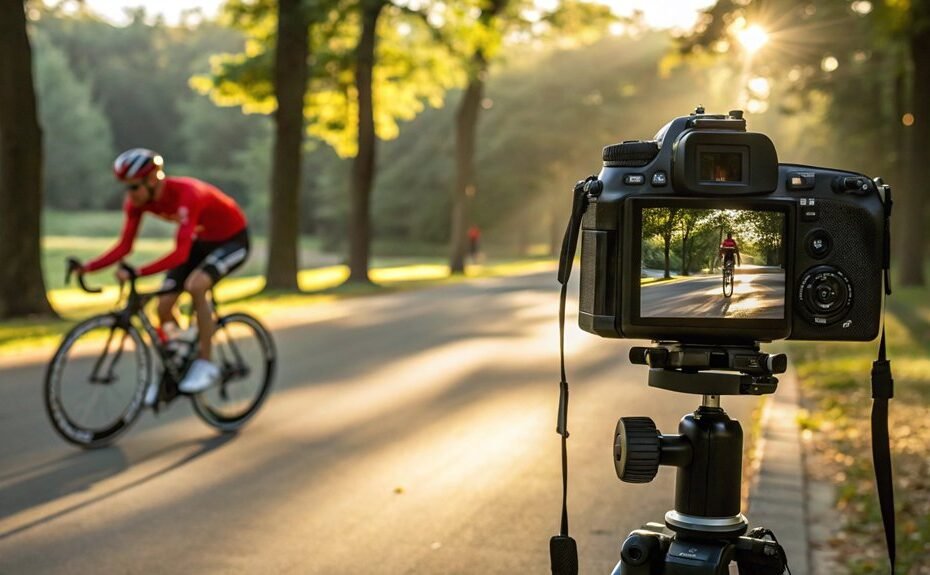AI Servo and AI Focus represent distinct autofocus approaches with five key differences. AI Servo provides continuous tracking for moving subjects, making it ideal for sports and wildlife photography. AI Focus switches between static and motion tracking but requires changeover time. Response speed favors AI Servo, which offers immediate adjustments versus AI Focus's detection delay. Focus accuracy remains higher in AI Servo for motion, while AI Focus excels with stationary subjects. Understanding these modes' technical nuances reveals their best applications.
Photographers seeking to capture the perfect shot must understand the essential differences between two of Canon's notable autofocus modes: AI Focus and AI Servo. These distinct focusing systems serve different purposes within Canon's camera ecosystem, with each mode offering specific advantages for various shooting scenarios. Basic Zone shooting remains the primary domain for AI Focus operation.
AI Servo operates as a continuous focus mode specifically designed for tracking moving subjects, making constant adjustments to maintain sharp focus even with rapid movement. This system excels in sports and wildlife photography, where subjects maintain consistent motion. The mode's predictive focusing capabilities allow it to anticipate subject movement patterns, adjusting focus continuously until the moment the shutter is fully pressed.
AI Focus functions as a hybrid mode, automatically switching between One-Shot AF and AI Servo AF based on subject movement detection. This versatility makes it suitable for situations where subjects may alternate between stillness and motion. Nevertheless, the mode's switching mechanism can introduce slight delays, potentially causing missed focus during rapid subject changes.
The response time between these systems represents a significant operational difference. AI Servo demonstrates superior speed in tracking fast-moving subjects, offering immediate focus adjustments without delay. Conversely, AI Focus requires time to detect movement changes and switch between focusing modes, which can result in missed opportunities during dynamic shooting situations.
Focus accuracy varies between the two systems based on shooting conditions. AI Servo maintains precise focus through continuous tracking, particularly beneficial when working with shallow depth of field in motion scenarios. AI Focus delivers more stable results for mainly stationary subjects with occasional movement, though its hybrid nature can sometimes lead to focus hunting during mode changes.
Technical implementation plays a vital role in system performance. Both modes require appropriate AF area selection for best results, with AI Servo particularly dependent on proper AF point configuration for effective tracking. The continuous focus capabilities of AI Servo demand more camera resources, while AI Focus balances resource usage between its two operational states.
The selection between these modes ultimately depends on the primary shooting scenario. Sports photographers and wildlife specialists typically favor AI Servo for its superior tracking capabilities, while portrait and scenery photographers often find AI Focus sufficient for their needs.
Understanding these fundamental differences allows photographers to select the most appropriate focus mode for their specific shooting requirements.
Most-Asked Questions FAQ
Can AI Focus and AI Servo Be Used Effectively in Low-Light Conditions?
Both AI Focus and AI Servo can work in low-light conditions, though performance may degrade. AI Servo typically maintains better tracking accuracy compared to AI Focus's less reliable shifts.
How Much Battery Life Do These Autofocus Modes Consume Compared to Manual?
AI Focus and AI Servo modes consume considerably more battery power than manual focus, with AI Servo being the most demanding as a result of its continuous tracking and sensor activity.
Do AI Focus and AI Servo Work With All Camera Lenses?
AI Focus and AI Servo modes primarily work with electronic autofocus lenses on compatible cameras. Not all third-party lenses support these features, and older manual lenses lack necessary electronic connections.
Which Autofocus Mode Is Better for Wildlife Photography in Dense Forests?
AI Servo autofocus mode performs better for wildlife photography in dense forests, offering superior continuous tracking and faster adjustments when following subjects through challenging foliage and low-light conditions.
Can These Autofocus Modes Be Customized for Specific Shooting Preferences?
Both autofocus modes offer extensive customization options through camera menus, including adjustable tracking sensitivity, focus priority settings, assignable buttons, and custom shooting profiles for different photography scenarios.
